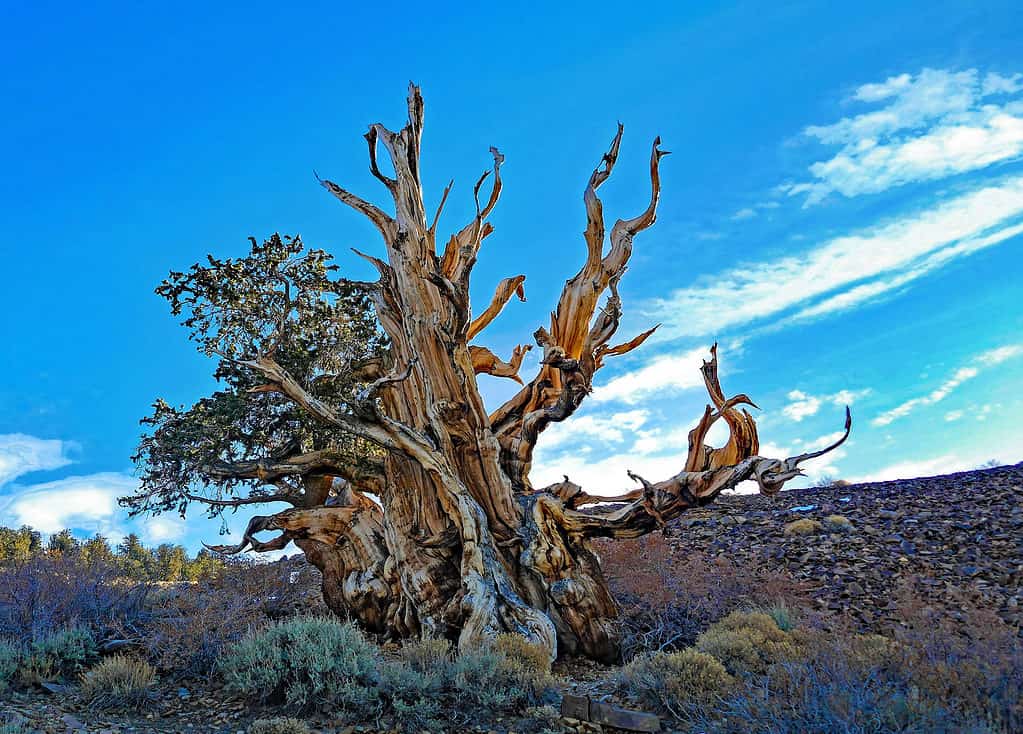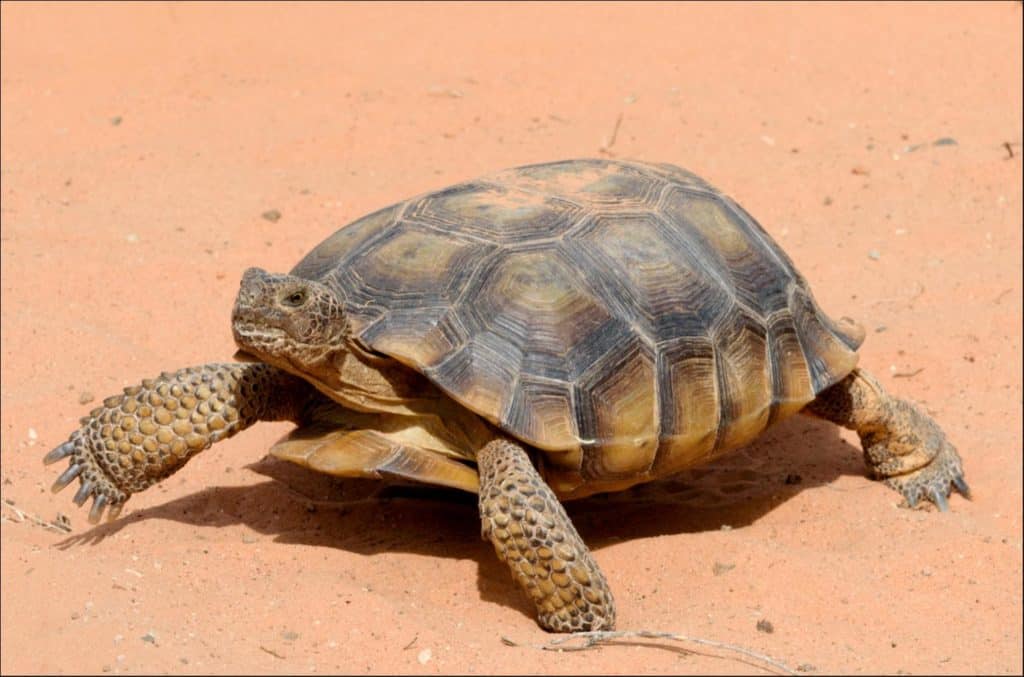Welcome to an exploration of the intriguing origins behind Nevada’s nickname, “The Battle-Born State.” Delve into the historical significance and discover how this unique moniker reflects the state’s spirited journey towards statehood in an era defined by conflict and resilience.
About Nevada

The state of Nevada has a rich and diverse landscape.
©Tobin Akehurst/Shutterstock.com
Nevada is a state located in the Western United States. It is bordered by Oregon to the northwest, Idaho to the northeast, California to the west, Arizona to the southeast, and Utah to the east. Nevada is the seventh-largest state by area and the ninth-most populous state in the US. It is known for its expansive deserts, mountainous terrain, and diverse climate.
The state is home to a number of major cities, including Las Vegas, Reno, and Carson City. Las Vegas is the most populous city in the state and is known for its vibrant nightlife and casinos. Reno is the second-largest city in the state and is a popular tourist destination for its nearby ski resorts and outdoor activities.
Nevada is known as “the Silver State” due to its rich history of silver mining. It is also a major producer of gold, copper, and other minerals. In addition to mining, tourism is a major industry in Nevada, with millions of visitors coming each year to experience the state’s many attractions.
Nevada is also home to a number of national parks, including Great Basin National Park, Red Rock Canyon National Conservation Area, and Lake Mead National Recreation Area. These parks are popular destinations for hikers, campers, and outdoor enthusiasts looking to explore the state’s unique landscape.
Why is Nevada Called the Battle Born State?
Nevada is commonly known as the ‘Battle Born State’ due to its entrance into the United States in 1864 during the Civil War. At the time, Nevada was a sparsely populated area in the American West, and the Union was in need of support to bolster its armies. Nevada answered the call and was admitted to the Union during the war, making it the 36th state.
The phrase ‘Battle Born State’ was used extensively in Nevada’s statehood campaign and has been used often ever since. It is also a popular nickname for state residents and a source of pride for many. The phrase reflects Nevada’s commitment to the Union cause and the strength of the spirit of its citizens.
The spirit of the ‘Battle Born State’ remains a strong part of the Nevada identity. The phrase is a reminder of the state’s commitment to the Union and its willingness to join the fight during a time of strife and uncertainty. It is also a reminder of the courage and strength of the state’s citizens during this difficult time in American history.
Other State Symbols of Nevada
Nevada, known as the Battle-Born State, embraces a multitude of symbolic representations that reflect its rich history and unwavering patriotic spirit. Beyond the renowned moniker bestowed upon it, Nevada proudly boasts an array of state symbols that encapsulate its unique identity.
Nevada State Tree — Great Basin Bristlecone Pine

The Battle Born State chose the bristlecone pine as their state tree.
©dlhca/Shutterstock.com
The bristlecone pine has been the official state tree of Nevada since 1987. This evergreen conifer is one of the longest-living species in the world, with some known specimens living for over 5,000 years. The bristlecone pine is a slow-growing species that can be found in isolated high-altitude regions of Nevada’s high mountains.
This state tree has a unique and distinctive appearance, with twisted, gnarled trunks and a crown of long, curved needles. It is a hardy species that can withstand harsh weather conditions, including extremely dry and cold temperatures. The bristlecone pine is also highly fire-resistant, which helps it survive in areas prone to wildfires.
The bristlecone pine is an important part of the Nevada landscape, providing habitat for a variety of wildlife species, including Clark’s nutcrackers. It is also good at producing oxygen for the environment. This species has a special place in the state’s history, with some specimens believed to have been living since before the first humans arrived in Nevada.
Sagebrush — Nevada’s State Flower

If you visit the Battle Born State, be sure to check out the state flower. It may surprise you!
Nevada is proud to call the sagebrush (Artemisia tridentata) its state flower. While it is not particularly showy, this small shrub has a long history in the state. It is native to the area and has been a source of food and shelter for wildlife and Native Americans for centuries. Sage grouse, pygmy rabbits, and mule deer all rely on sagebrush for food. Because of its long taproot that draws water up from the soil, sagebrush helps keep surrounding grasses and herbs alive.
The sagebrush is a low-growing, woody shrub that is often found in the dry, arid regions of the American West. It is easily recognizable due to its grey-green leaves and its fragrant smell. The flowers of the sagebrush are small and inconspicuous, but they provide essential nectar for local pollinators.
Sagebrush is also an important part of Nevada’s history. It was used by Native Americans for food, medicine, and shelter. It was also an important part of Nevada’s mining industry, as it was used to line the walls of the many shafts dug during the gold rush.
Today, the sagebrush is still one of the most important plants in the state. It is used to restore degraded areas, to provide habitat for wildlife, and to help prevent soil erosion. Nevada is proud to call the sagebrush its state flower, as it has played a vital role in the state’s history and landscape.
Battle Born State Bird — Mountain Bluebird

The delicate and beautiful mountain bluebird is a state symbol of Nevada, the Battle Born State.
©Danita Delimont/Shutterstock.com
The Mountain Bluebird (Sialia currucoides) has been the official state bird of Nevada since 1967. It is a small thrush of the family Turdidae and is easily identifiable by its blue back, wings, and tail. It has a white belly, white wing patches, and a dark brown cap.
Mountain bluebirds generally live in open areas such as meadows, deserts, and grasslands. They prefer higher elevations and are often seen in mountain valleys. They feed on flying insects, spiders, and berries.
The mountain bluebird breeds from early April to late June and nests in cavities, cliffs, and even man-made structures. The female lays four to six eggs, which are incubated for 13 to 15 days. The young fledge after 17-21 days.
Desert Bighorn Sheep — Battle Born State Animal

You can view desert
bighorn sheep
(Ovis canadensis nelsoni) at Anza Borrego Desert State Park.
©iStock.com/randimal
The Nevada state animal is the desert bighorn sheep (Ovis canadensis nelsoni). These majestic animals can be found in the desert and mountainous regions of the state. The desert bighorn sheep has a unique physical adaptation to its environment. It has a specially adapted hoof which allows it to climb steep slopes and rocky terrain with ease.
The desert bighorn sheep is a large and powerful animal, with males weighing up to 120-275 pounds and having a shoulder height of up to 42 inches. They have distinctive curved horns, which are used for both protection and dominance.
The desert bighorn sheep have a unique diet that consists mainly of native desert vegetation such as shrubs, grasses, and succulents. They also eat cacti, forbs, and sedges.
The desert bighorn sheep is an important species in the Nevada ecosystem and is listed as a “Species of Special Concern” by the Nevada Department of Wildlife. Wildlife biologists are actively studying and monitoring the desert bighorn sheep population in order to ensure its continued existence. There are thought to be fewer than 7,000 of these majestic animals alive in the wild.
Desert Tortoise — Nevada’s State Reptile

The resilient desert
Tortoise
(Gopherus Agassizii) is a fitting symbol for the Battle Born State.
©John Andrus/Shutterstock.com
The desert tortoise (Gopherus agassizii) has been the official reptile of the state of Nevada since 1989. It is a large land-dwelling species of tortoise, found primarily in the Mojave and Sonoran Deserts. The desert tortoise is a slow-moving, herbivorous reptile and lives in burrows, which it digs for shelter and protection. It is well adapted to living in a hot and arid environment.
The desert tortoise is a threatened species and is protected by both state and federal laws in the United States. The species is in decline due to habitat destruction, and many conservation efforts are underway to help protect the desert tortoise. These include reintroduction programs, habitat restoration, and public education initiatives.
The desert tortoise is an important part of the desert ecosystem and provides a vital link in the food chain. Its presence is important for the health of the entire desert environment. As Nevada’s state reptile, the desert tortoise is a symbol of the state’s commitment to conservation and the protection of its natural heritage.
The photo featured at the top of this post is © Neil Lockhart/Shutterstock.com
Thank you for reading! Have some feedback for us? Contact the AZ Animals editorial team.







